Garden flowers

Everyone can create a beautiful flower garden on the territory of a summer cottage or a country house. To do this, you just need to choose the right types of plants and provide them with proper care.


Views
Garden flowers for their site are usually chosen based on several basic parameters.
By life expectancy
To begin with, it is worth noting that all plants are divided into three categories, depending on their lifespan.
- Annuals. This group includes flowers that go through all stages of development in one vegetative period. Most of them are unpretentious. Annuals with a short flowering period are sown directly into the ground in the spring. After the emergence of seedlings, the rows are thinned out. Flowers with a longer development period are usually grown in seedlings. Annuals are great for those who love constant change.

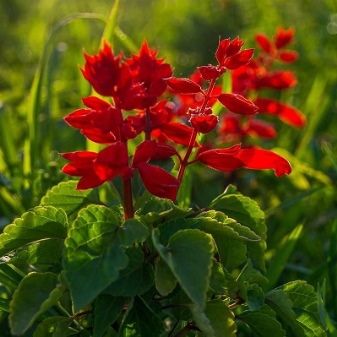
- Biennials. Plants of this type develop within two years. In the first year after planting in the ground, they develop a rosette of leaves. In the second year, they begin to bloom and bear fruit. This category includes mallows, daisies and bells. Biennials are most often planted in mixed flower beds.


- Perennials. Flowers that belong to this category live for more than two years. Perennial crops are able to survive in harsh conditions. This group includes peonies, lilies, gladioli, roses and irises. Perennial flowers are used to create long-lasting flower beds in summer cottages.
When decorating a site, you can use different types of plants. The main thing is to provide all of them with proper care.


By application
When choosing flowers for a site, the type of flower bed is also taken into account.
- Monoclumba. Such a flower garden consists of plants of the same species. It looks bright and colorful. This type of flower bed can be decorated with asters, roses or petunias. In this case, it is not necessary to select flowers with buds of the same shade.


- Annular. Plants for such a flower bed are selected in height. First, tall flowers are planted and only then low ones. An annular flower bed can surround a tree, a gazebo, or a garden sculpture.


- Carpet. Such a bed is densely planted with dwarf plants with colored foliage. To decorate the site, you can use oxalis, gnafalium or sedum. Such flower beds must be carefully looked after. After all, the death of several plants will lead to a violation of the clarity of the pattern and spoil the appearance of the entire flower bed.

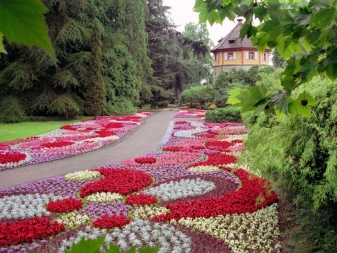
- Vertical. Long vertical beds are usually placed along the fence or against one of the walls of the house. Plants such as petunia, lubelia and sutera are great for vertical gardening. Gardeners also use vertical beds to plant strawberries, mint and basil.
When decorating a site, you can use several different types of flower beds. This will only make it prettier.


Overview of spring garden flowers
To make the site look beautiful from the first days of spring, it is worth picking up several types of primroses for its decoration.
Siberian Proleska
These blue flowers are called by many as the messengers of spring. They are distinguished by their unpretentiousness and the ability to grow and reproduce in almost any conditions. The Siberian forest grows in a solid carpet. A perennial does not need a transplant. That is why novice gardeners are very fond of him. It blooms in late March.You can plant graceful flowers along paths, in flower beds and alpine slides.


Crocus
Graceful crocuses bloom from mid-April. To decorate your site, you can choose flowers with white, yellow, purple or purple color. They can be planted both in the sun and in the shade. It is worth remembering that these plants do not tolerate stagnant water.


Muscari
These flowers love the sun and easily endure harsh winters. They usually bloom in late April. Inflorescences are white, blue and purple. In order for a perennial to grow in one area for several years in a row, fertilizers must be regularly applied to the soil. This is usually done in the middle of autumn.


Vesennik
A perennial herbaceous plant blooms in early spring. Its buds are white or bright yellow. Vesenniki are light-loving flowers. Therefore, it is worth planting them in high and well-lit places.


Periwinkle
These stunted blue flowers with dark green leaves creep along the ground in a dense carpet. The heat-loving periwinkle thrives best in shade or partial shade. Even novice gardeners can grow these flowers on their site.
Periwinkle does not need watering and is not afraid of weeds.


Forget-me-not
Low plants are adorned with dark green foliage and numerous blue, blue or pink flowers. Forget-me-nots love shady places. They begin to bloom at the end of April. Cut forget-me-nots can stand in a vase of cool water for 3-4 weeks. Therefore, they are often used to compose spring bouquets.


Anemones
This plant is also known as anemone. There are many different varieties of these flowers. Their buds can be white, lilac, purple or pink. Anemones are pretty capricious flowers. They need regular autumn feeding and watering. For the winter, anemones should be covered with dry leaves to provide them with good frost protection.
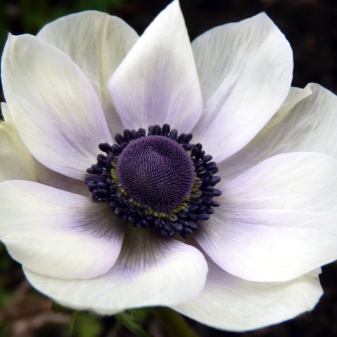

Primrose
These plants begin to bloom as soon as the snow melts. Primroses come in yellow, blue and even red. Despite their bright color, they go well with most garden plants. These flowers are light-requiring. But in partial shade, they bloom longer and have a brighter color. Plants are hardy and winter well without shelter. You can even grow primroses in Siberia.


Popular summer varieties
The selection of summer flowers is very large. Therefore, it can be very difficult for a novice gardener to select just a few varieties for decorating his site.
Dicenter
These fragrant flowers have an unusual shape and bright color. They grow up to 1 meter in height. Dicenters are unpretentious and can grow both in the sun and in the shade. Plants prefer light, slightly acidic soils with a large supply of nutrients. In the heat, flower beds with these flowers are mulched.


Rudbeckia
This type of flower is also known as the golden ball. A perennial plant grows up to two meters in height in one season. It is decorated with double yellow spherical flowers.
Most often, these plants are planted next to gazebos, pergolas or wells.


Astrantia
These perennial plants belong to the umbrella family. They are well adapted to life in the shade and partial shade. These flowers grow on any kind of soil. Bloom throughout the summer. Astrantia buds can be white, purple or red.


Thrift
Ornamental perennial plants bloom from June to the end of August. Caring for an army is very simple. The main thing is to apply fertilizers in a timely manner and clear the area of weeds. In this case, the flowers will look luxurious for several seasons. Armeria can be planted in flower beds or alpine hills. Summer flowers such as chamomile, chamomile, delphinium, matiola, pansies and lilies are also popular among gardeners.


Plants blooming until late autumn
To make the flower garden look beautiful until the first frost, it is worth planting plants with an autumn flowering period on it.
Autumn Gelenium
This perennial begins to bloom from the middle of summer and retains its attractiveness until the very frost. Shrub plants prefer sunny locations. These flowers do not need feeding.

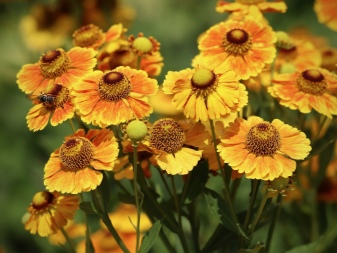
Perennial aster
Since these flowers begin to bloom in September, they are often referred to as santbrinks. They are strong and resilient plants. The leaves of such asters are dark green. The buds can be lilac, pink, red, or white. Planting asters is on elevations.


Gerbera
This plant belongs to the Asteraceae family. Gerberas can be grown both in pots and in the garden. Flowers are bright and rich in shades. Light-loving plants should not grow in too moist soil.
Excess moisture leads to the development of various diseases.

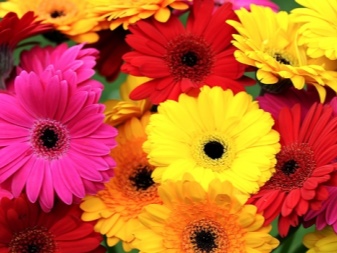
Colchicum
A perennial plant with large leaves blooms from September to October. The plant is unpretentious. There is no need to water it. But in order for it to please the owners of the site with abundant flowering, the soil on the site must be regularly loosened and cleaned of weeds.
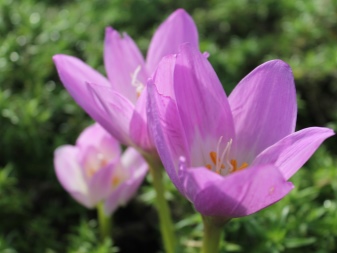
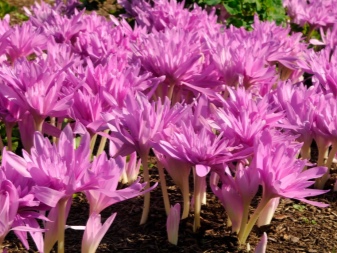
Exotic and rare flowers
Experienced gardeners often buy unusual exotic plants for their sites. They can become a real garden decoration.
- Tigridia. These bulbous plants delight gardeners with their vibrant colors. They are easy to care for and unpretentious. Tigridia bloom from July until the beginning of autumn frosts. They need to be planted in sunny places. So that tall specimens do not bend to the ground over time, they are usually tied to supports.

- Sparaxis. This exotic plant is found naturally in South Africa. It should only be grown in well-lit areas. In addition, it is worth remembering that the plant does not tolerate frost. So, it must be carefully covered with leaves with the arrival of cold weather.

- Oxalis. This is a popular plant that can be grown in summer cottages. In appearance, oxalis leaves resemble clover. That is why it is often called the “flower of happiness”. Since the plant is unpretentious, both beginners and experienced growers can cope with its cultivation.

- Cannes. This plant grows up to two meters in height. Its leaves are dark green, brown, bronze or variegated. Large cannes flowers also look luxurious. They come in white, orange and red. The plant blooms continuously throughout the summer.

- Alstroemeria. Native to South America, this flower is also known as the Peruvian lily. Its small, fragrant flowers resemble a flock of butterflies perched on a green branch. Alstroemeria is unpretentious. It grows very quickly and rarely gets sick.
Any of these flowers will look beautiful both in a large area and in a small flower bed.

Which pots can be grown outdoors?
Many gardeners plant plants not only in open ground, but also in large pots or pots. They grow both undersized flowers and ampelous. The following plants are best suited for planting in pots.
- Ahimenes. The plant is decorated with large flowers of blue, red and white. The plant blooms for several weeks. You need to grow it in a well-lit place.

- Balsam. This flower is suitable for novice gardeners. It is unpretentious and blooms all summer long.

- Begonia. This flower is very common on balconies and verandas. Dwarf begonias are best suited for growing in pots. They grow up to 15 centimeters in height.

- Bident. The bright flower is light-requiring and unpretentious. The more light in the place where it grows, the more abundant its flowering.

- Dichondra. This plant with long hanging branches looks beautiful and graceful. Dichondras grow well both in the sun and in the shade. The length of their shoots can reach 1 meter. Such plants bloom from early spring to late summer.
You can place pots and pots on the terrace, gazebo or in the garden.

Selection features
When planning the planting of plants in the garden, it is very important to take into account the features of the site.
The soil
The quality of flowers largely depends on the soil on which they are grown. Medium-viscous soil is suitable for most garden plants. But they do not like sour and waterlogged soil. You can check the acidity of the soil using a litmus test, which can be bought at a regular flower shop. Soils with a pH of less than 6 units are acidic.
To lower the acidity of the soil, it must be mixed with quicklime. If the soil is too clayey, it can be mulched with sawdust. Plants such as Gaillardia, Goldenrod, Oregano, Sedum and Meadowsweet can be used to create flower beds in poor soil.


The need for moisture
All plants planted in the garden can also be divided into moisture-loving and drought-resistant. For the design of dry slopes and the arrangement of rock gardens, you can use the following plants:
- iris;
- echinacea;
- Byzantine purist;
- crocosmia;
- periwinkle;
- stock-rose.
In damp and swampy areas, meadowsweet, marigold, buzulnik, milkweed and loosestrife are grown.


Need for sun
When choosing plants, you need to take care that they have enough sunny color. Shade-loving plants cannot grow in the sun, and light-loving plants cannot grow in the shade. The most popular shade-tolerant flowers are hosta, hydrangea, aquilegia, garden geranium and dicentra. For a sunny flower bed, you can choose poppies, lavender, peonies, purslane or chamomile.

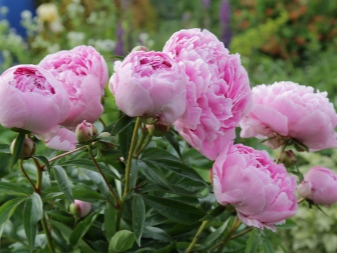
Other criteria
When choosing plants for a flower garden, it is also important to pay attention to how well they combine with each other. You can choose both close in shade and contrasting flowers. Both undersized and tall plants are placed on the same flower bed. They are planted so that they do not interfere with each other.
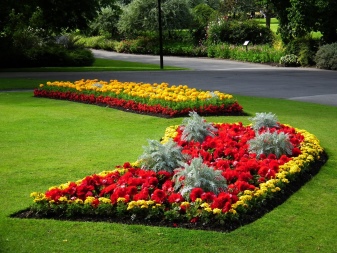

How to decorate a flower bed?
To make the flower garden look more beautiful and original, it can be decorated with various decorative details.
- Vases and stands. They are usually placed in the center of the flower bed and surrounded by low-growing plants. The vases can be used as a flower pot or bird feeder.


- Figurines. Various figures also look great at their summer cottage. To make the decorations more visible against the background of bright colors, they should be placed on dais. To decorate flower beds, figures of garden gnomes or various animals are usually used.



- Decorative stones. Using crushed stone or pebbles, you can create a beautiful slide on the site. In addition, colored stones are often laid at the edges of the flower garden, forming neat paths.
You can also use hand-made figures to decorate flower beds. The main thing is to take into account their compatibility with plants on the site.



Examples of beautiful compositions
When planning the landscape design of your site, you can use ready-made examples as sources of inspiration.
Beautiful rabatka
Plants of different colors are used to decorate this flower bed. They make up a beautiful pattern. Even a novice gardener can cope with the design of such a flower bed. It is best to use perennial plants to decorate it.

Flowerbed in a flowerpot
An original flower bed of this type can be placed next to the path, terrace or conversation. Usually annual purchased flowers are planted in flowerpots. After wilting, they are quickly replaced with new ones. Such an original flower bed is a real decoration of the site.

Multi-tiered flower bed
Such a flower garden is perfect for a small summer cottage. Most of the plants are found in beautiful pots and flowerpots. Flowers do not interfere with each other. In addition, the owners of the site can change their places at any time. If you approach the design of a flower garden with imagination and choose suitable plants, the garden will be good at any time of the year.








































































































The comment was sent successfully.